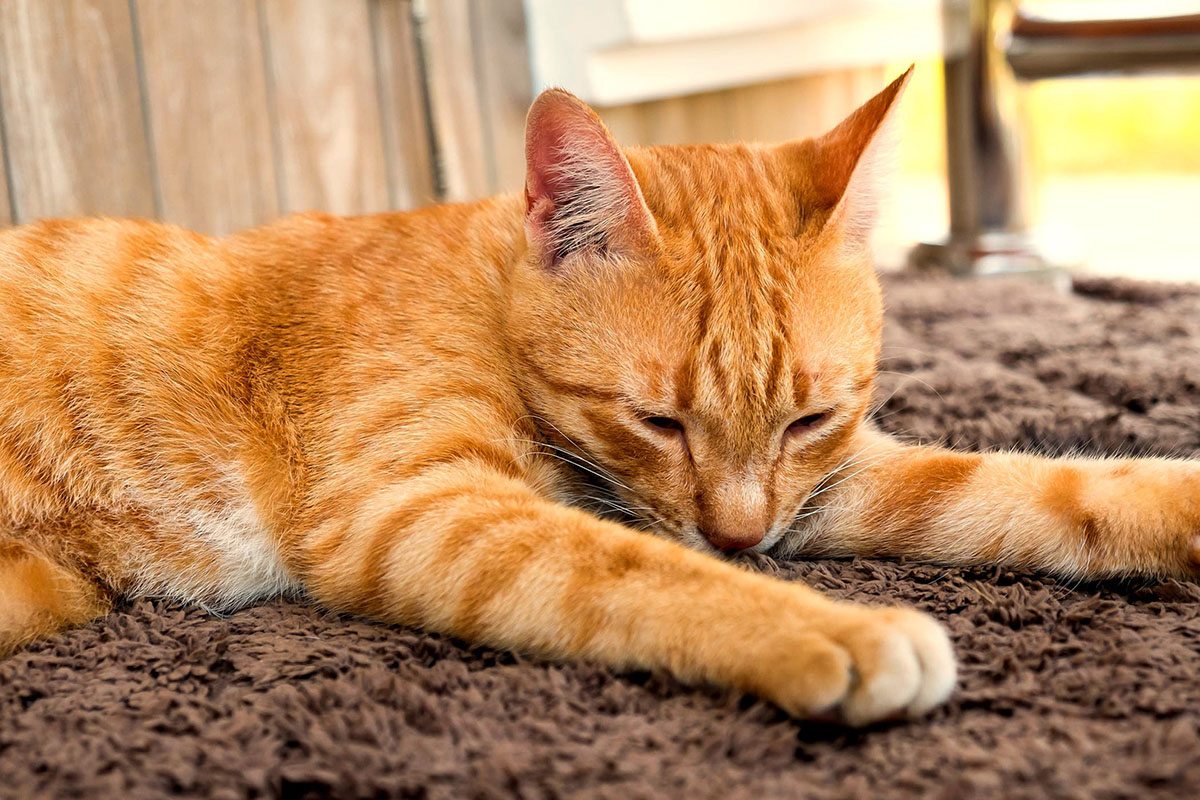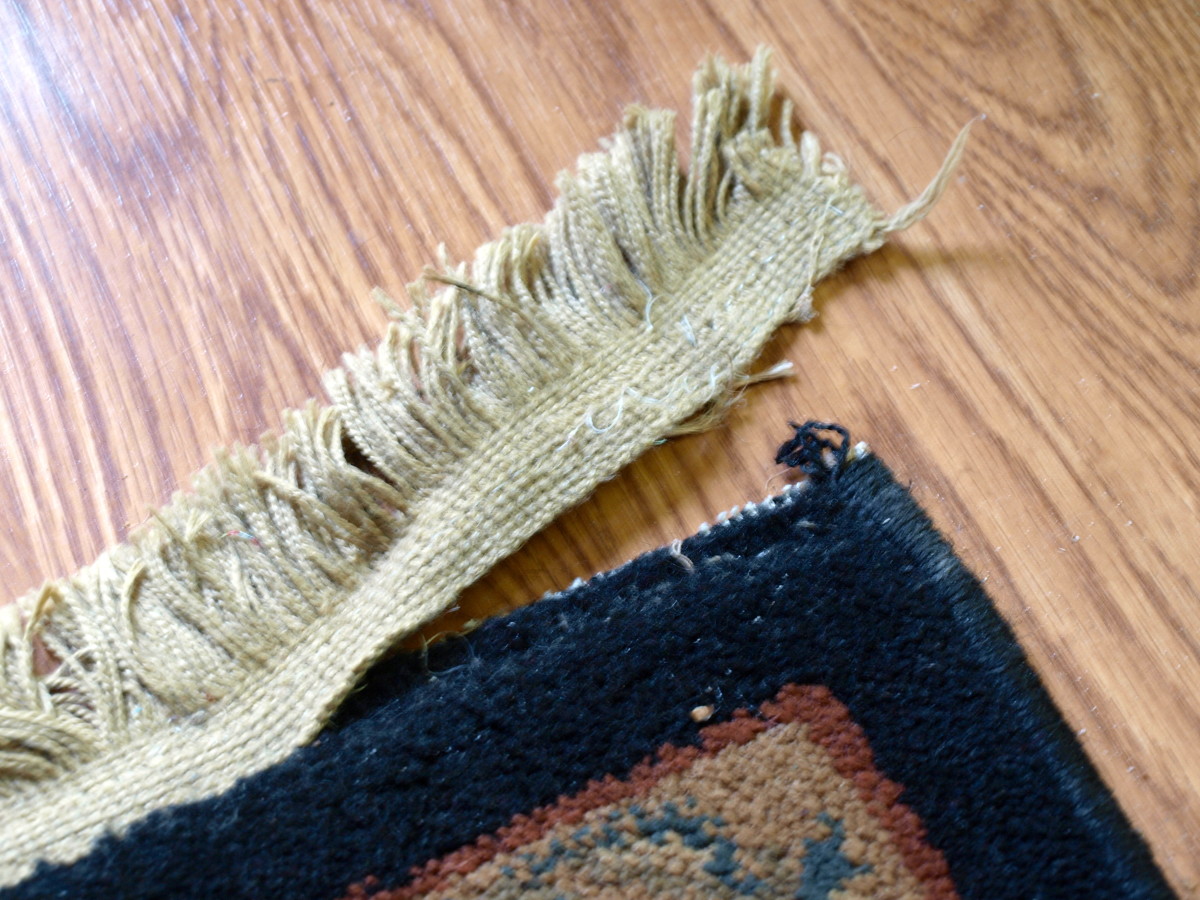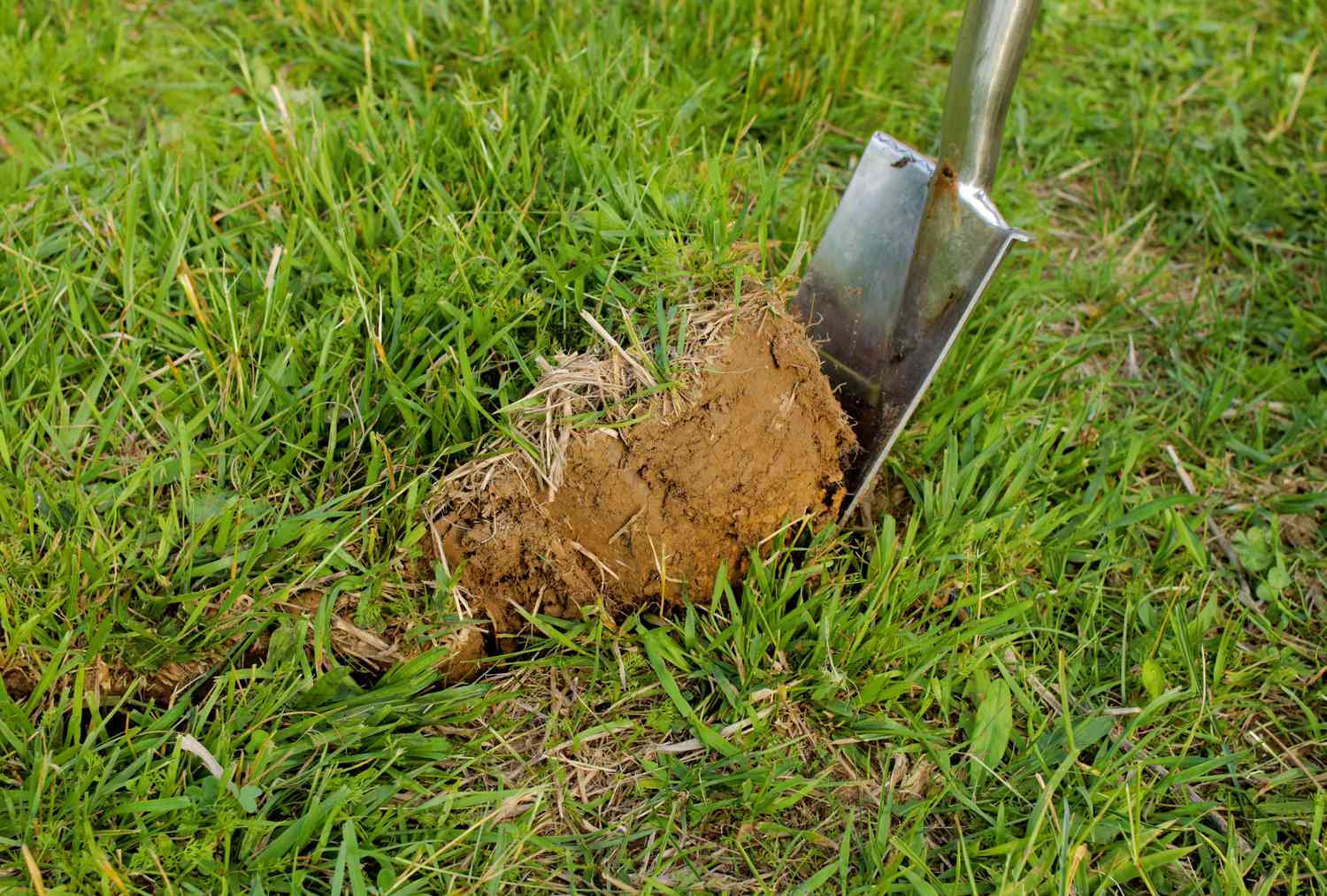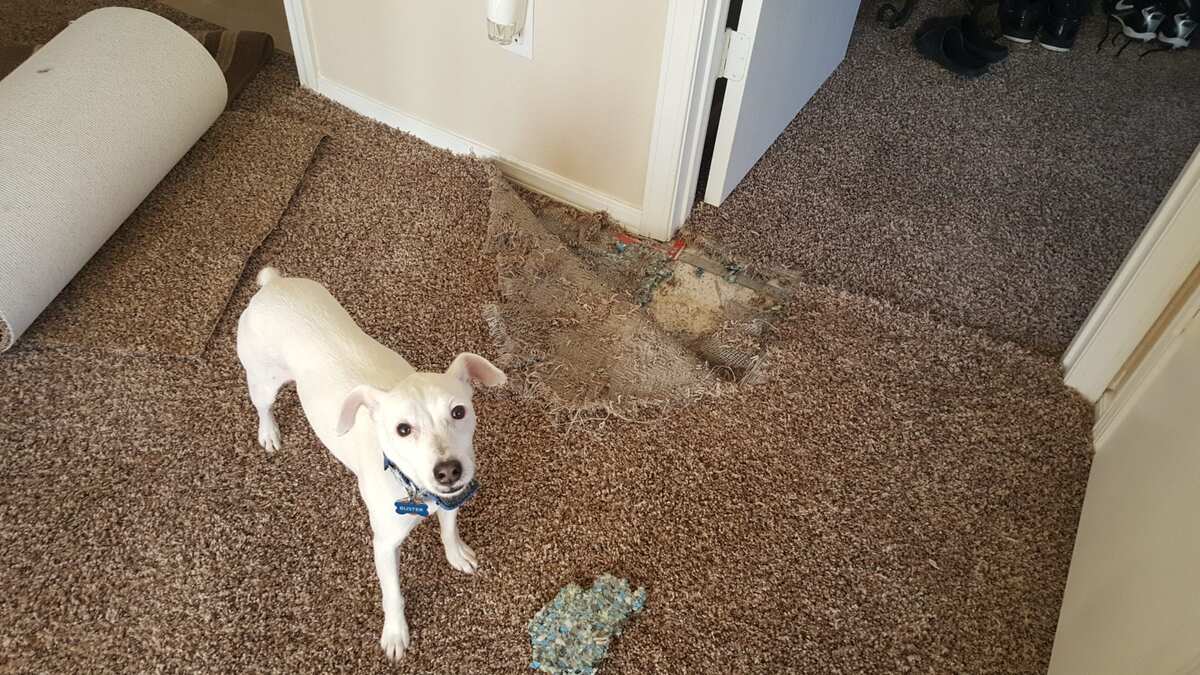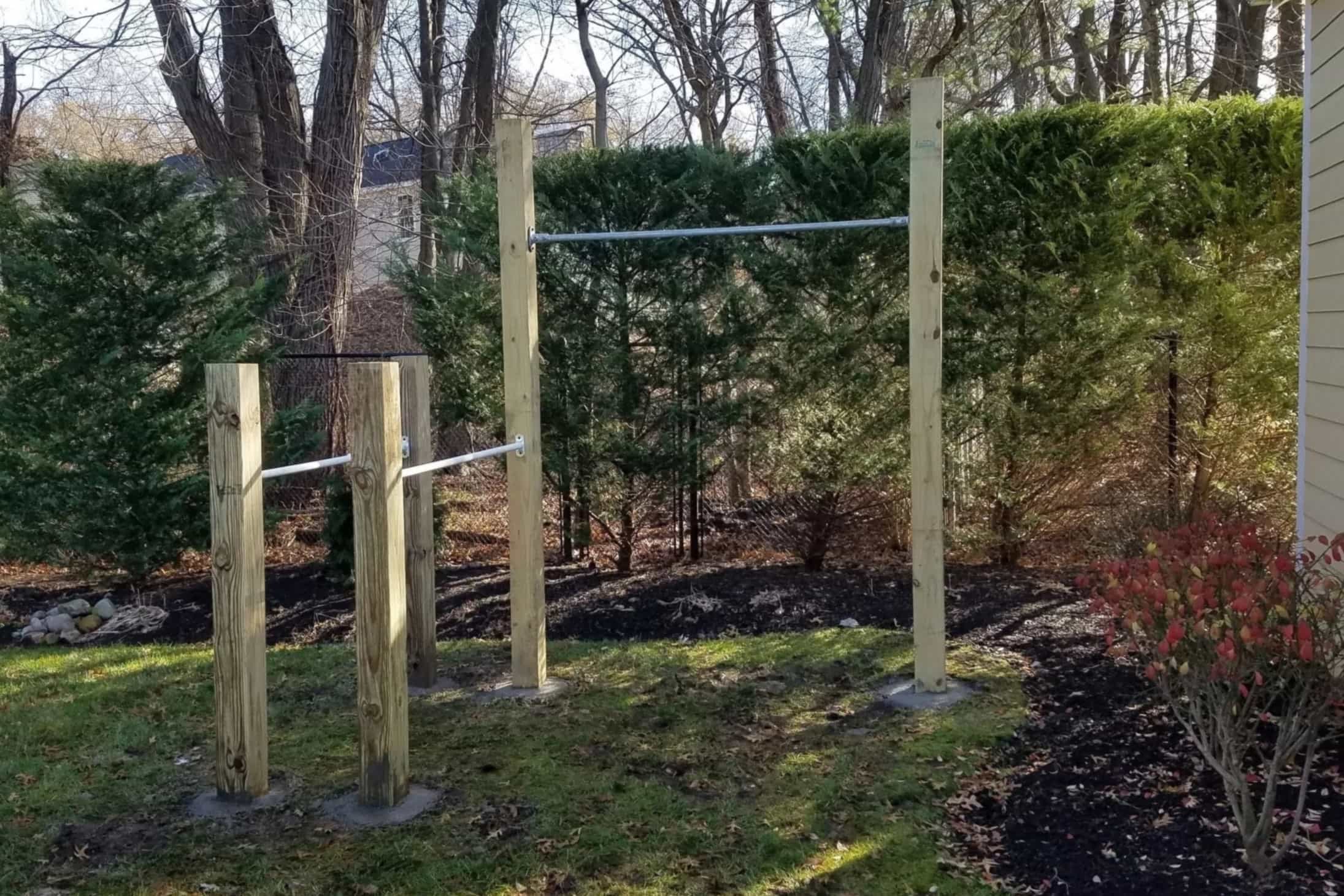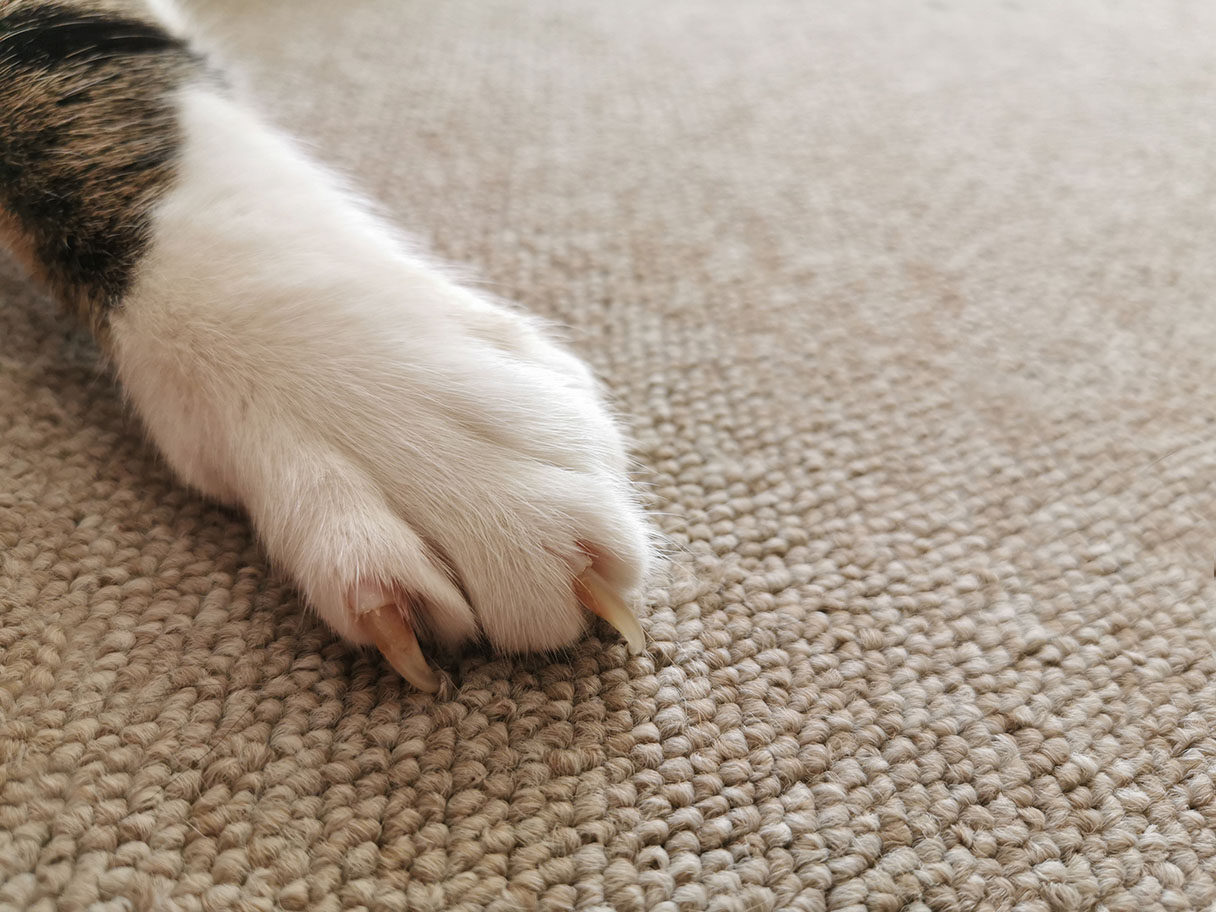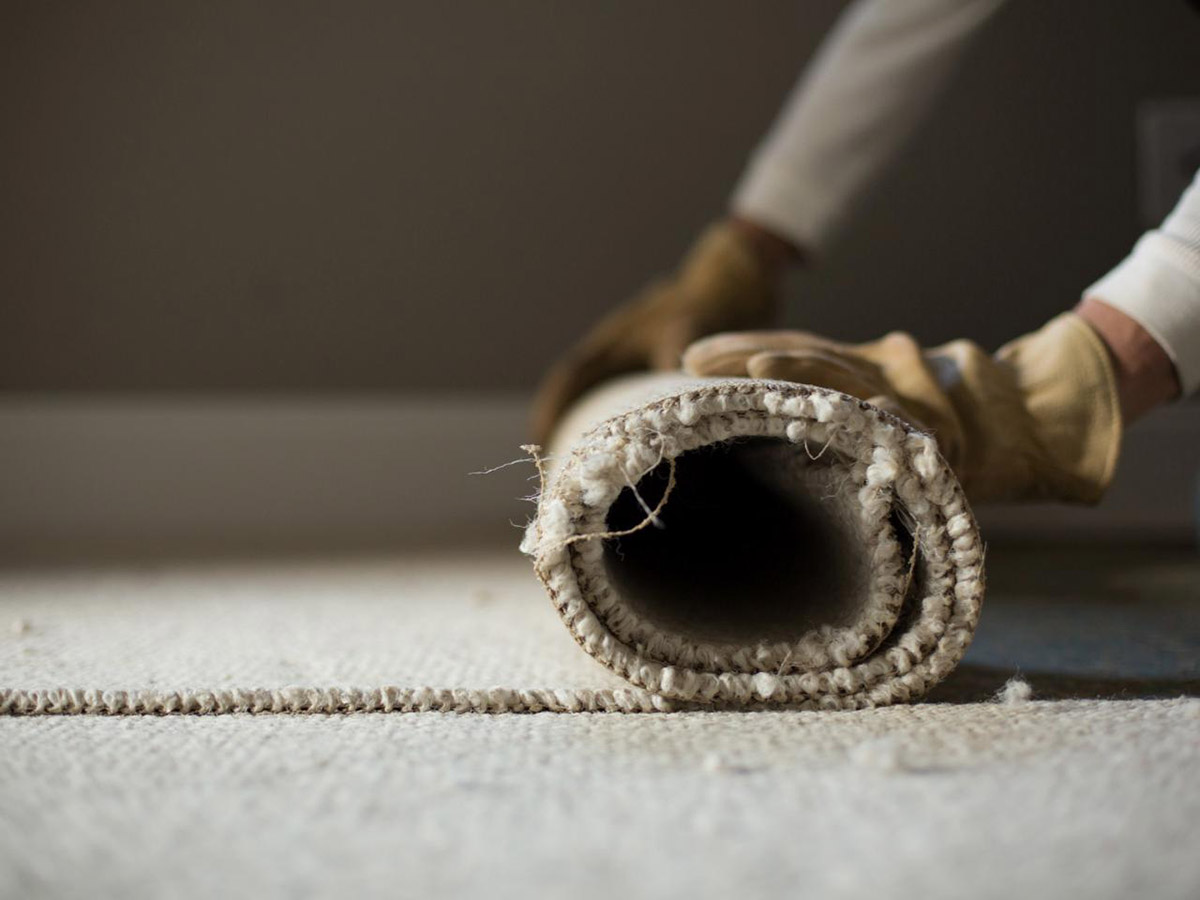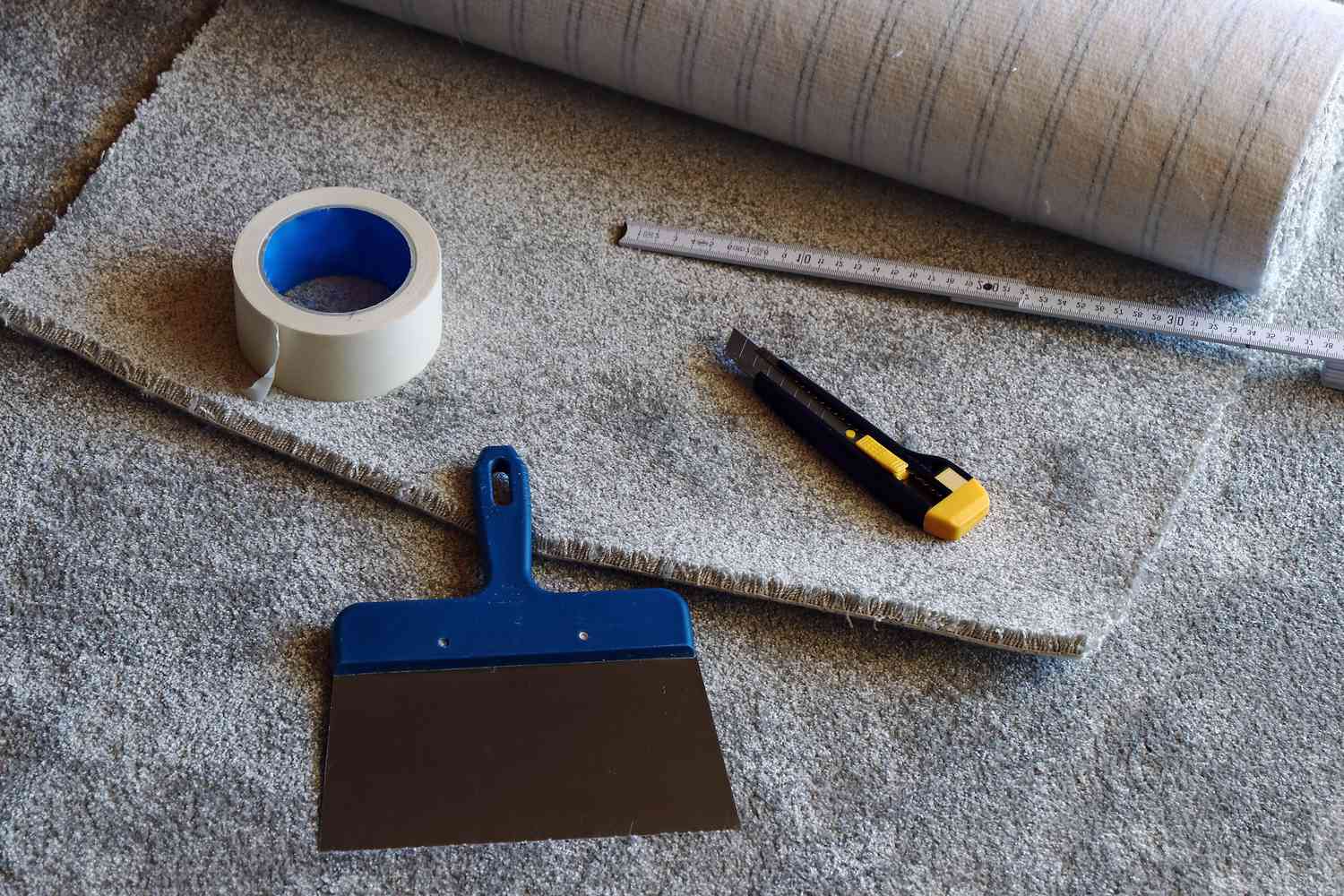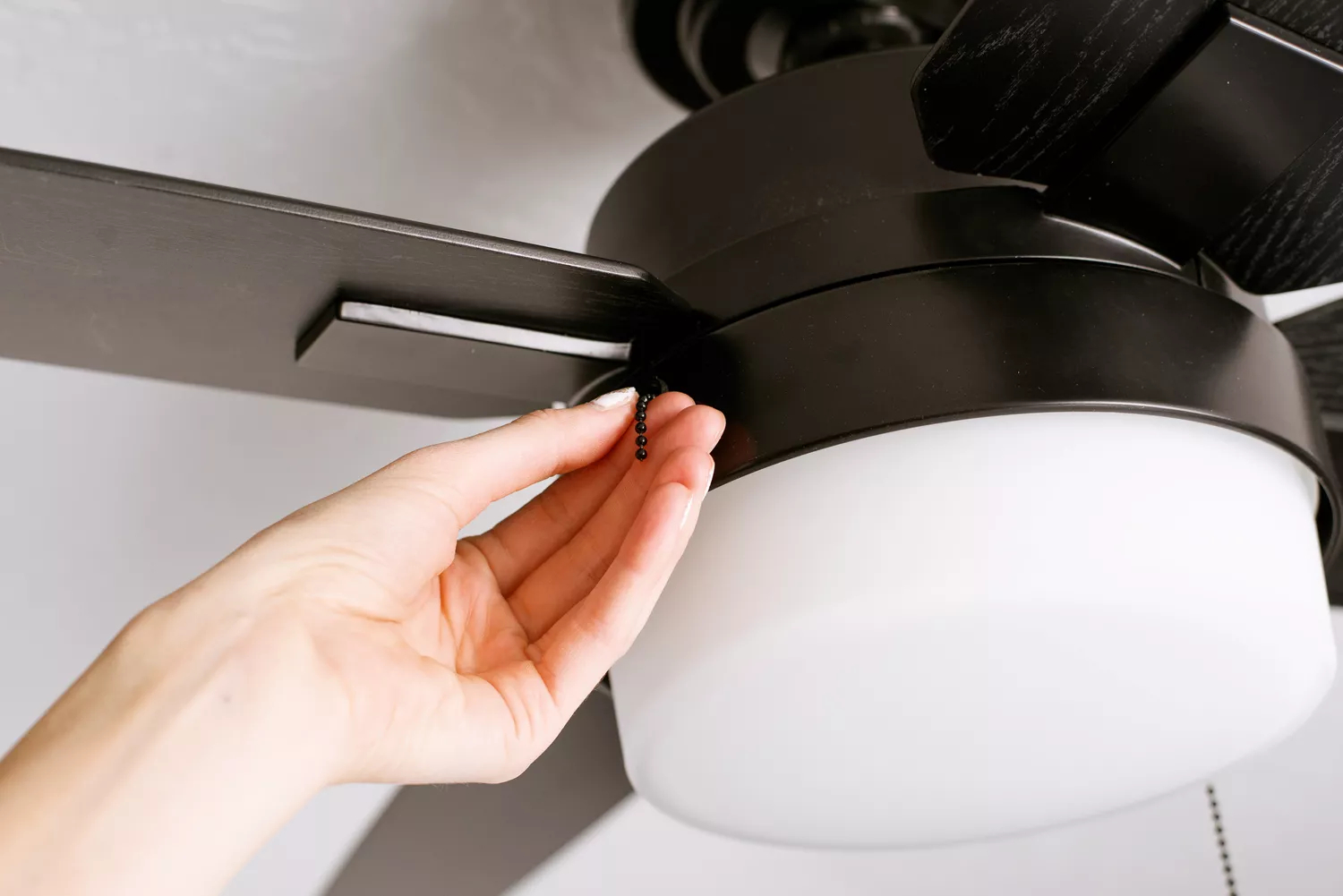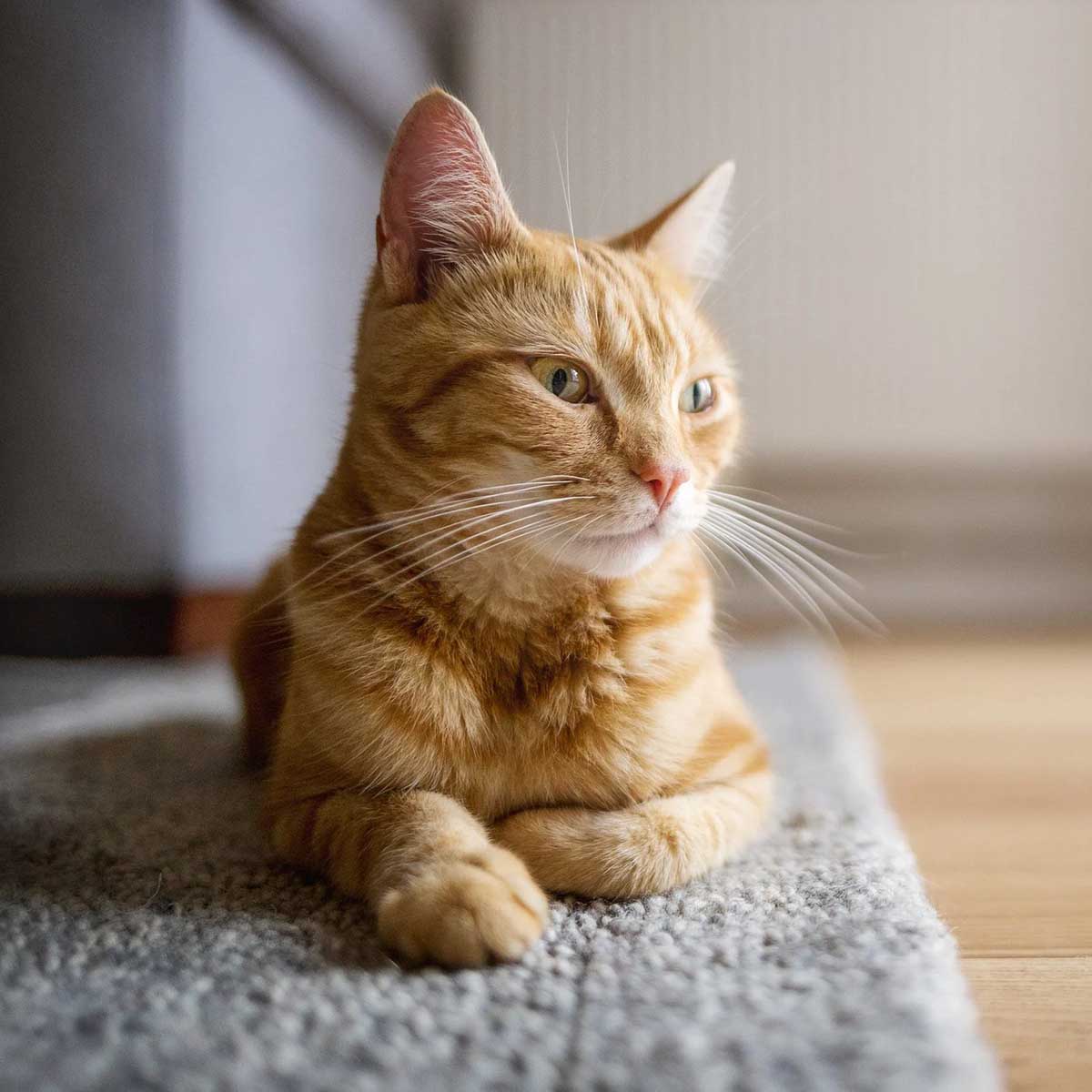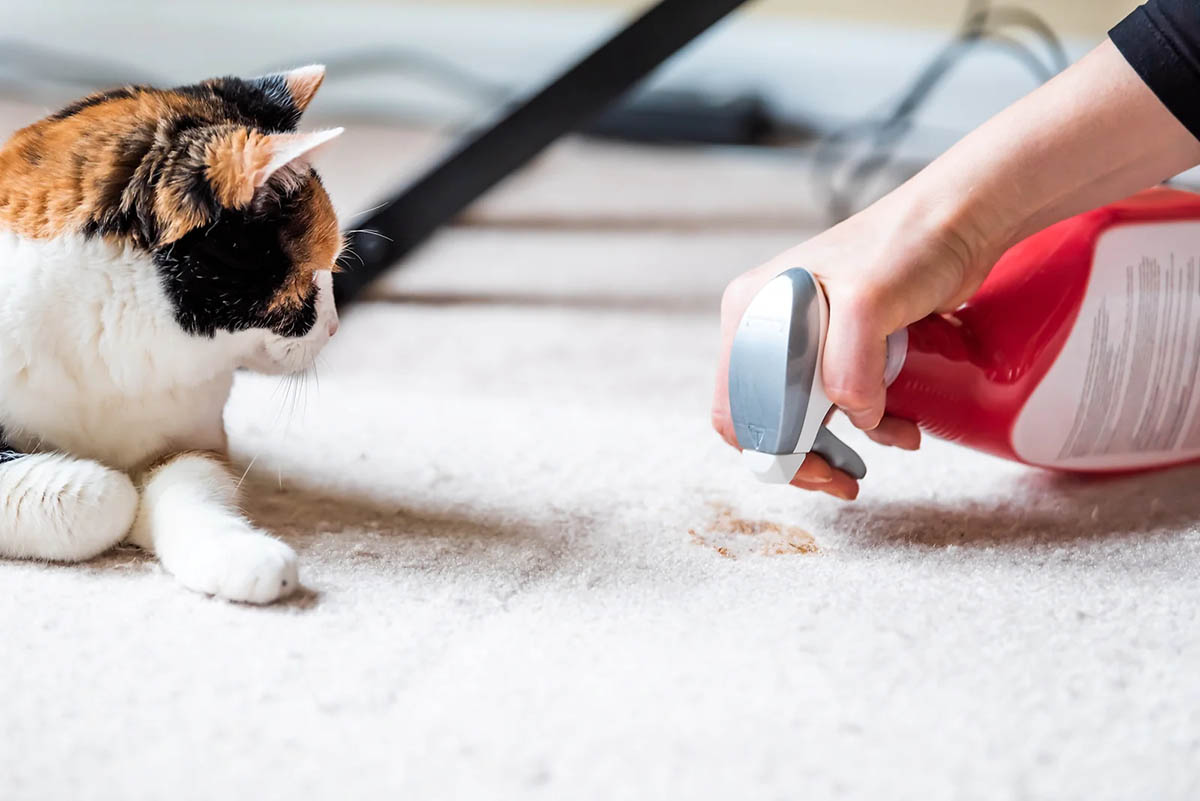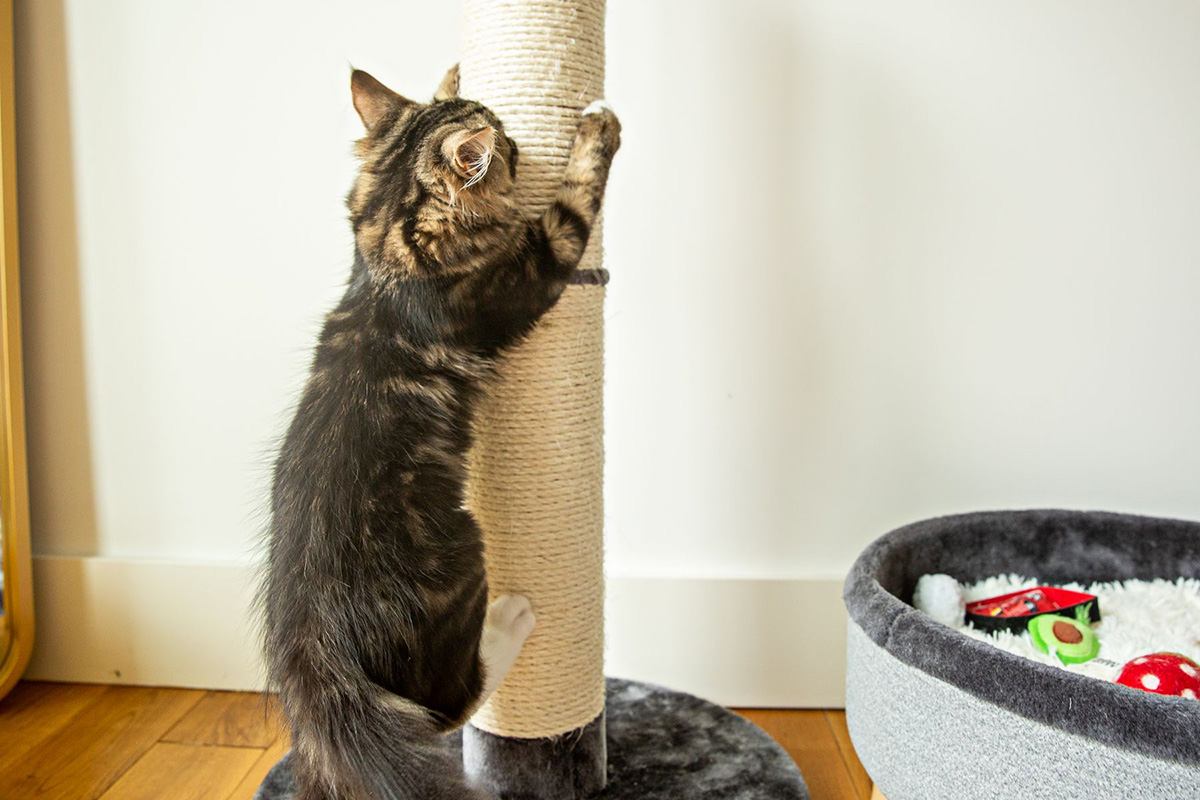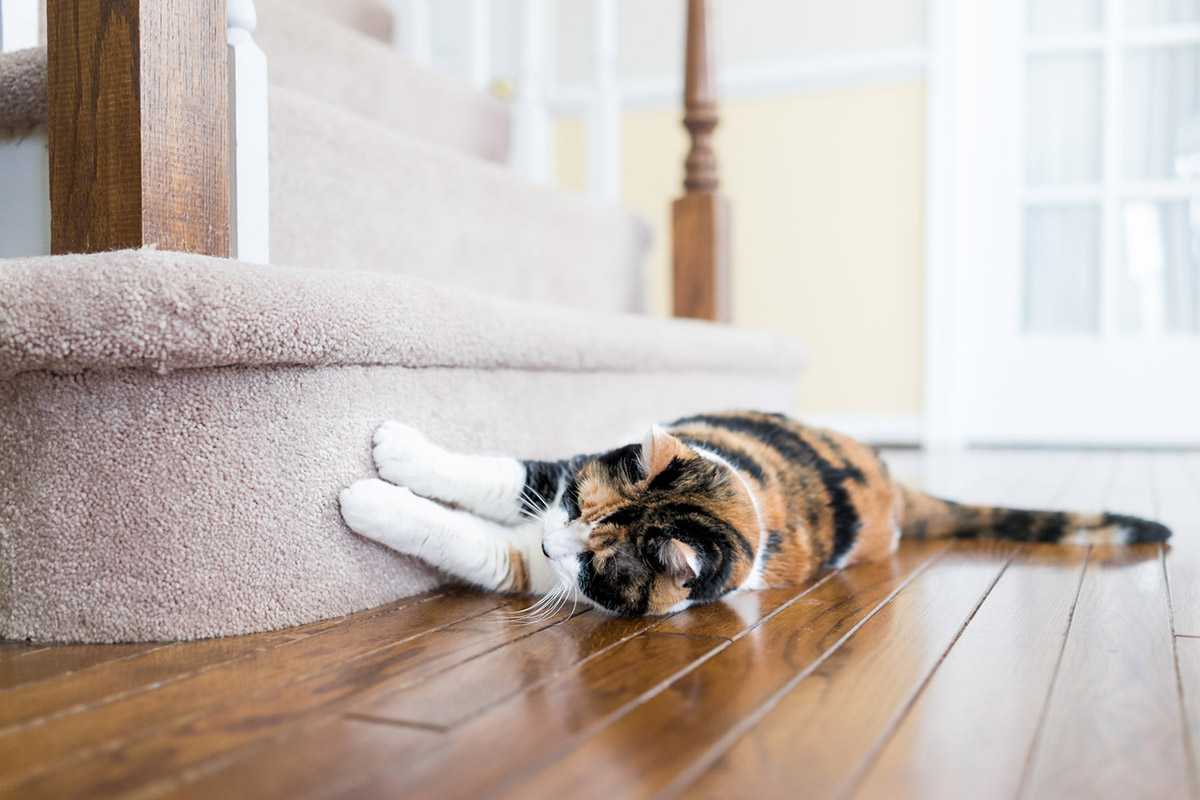

Articles
How To Fix A Carpet Pulled Up By A Cat
Modified: August 28, 2024
Learn how to fix a carpet that has been pulled up by a cat with helpful articles and tips. Restore your flooring to its original condition with our expert advice.
(Many of the links in this article redirect to a specific reviewed product. Your purchase of these products through affiliate links helps to generate commission for Storables.com, at no extra cost. Learn more)
Introduction
Having a pet cat can bring so much joy and companionship to your life. However, it’s not uncommon for our feline friends to engage in playful activities, sometimes resulting in unintended consequences. One common issue cat owners may face is finding their carpets pulled up or damaged by their mischievous feline companions.
If you’re dealing with a carpet pulled up by a cat, there’s no need to panic. With a little bit of patience and some simple DIY techniques, you can easily fix the damage and restore your carpet to its original condition. In this article, we’ll guide you through the process of repairing a carpet pulled up by a cat, step by step.
Before we delve into the fix, it’s important to understand why cats have the tendency to claw or pull up carpets. Cats are naturally inclined to scratch and claw as a means of marking territory, stretching their muscles, and keeping their claws in shape. Unfortunately, this behavior can unwittingly wreak havoc on our beloved carpets.
To begin the carpet repair process, gather the following tools and materials:
- Utility knife or carpet cutter
- Carpet adhesive or heavy-duty carpet tape
- Spare carpet pieces (if available)
- Scissors
- Measuring tape
- Staple gun (optional)
Now that you have the necessary tools and materials, it’s time to assess the damage caused by your cat’s carpet-pulling adventure. We’ll guide you through this process in the following section.
Key Takeaways:
- Understanding the extent of the damage caused by your cat’s carpet-pulling escapade is crucial for determining the most effective repair method and ensuring a successful outcome.
- By implementing prevention tips and consistently reinforcing positive behavior, you can create a harmonious environment for both you and your furry companion, minimizing the risk of future carpet-pulling incidents.
Read more: How To Pull Up A Carpet
Understanding the Issue
Before we jump into fixing the pulled-up carpet, it’s essential to understand the extent of the damage caused by your feline friend. Assessing the issue will help you determine the most appropriate method of repair and ensure a successful outcome.
Start by closely examining the affected area. Check if the cat has simply pulled up the carpet fibers or if they have caused any structural damage to the underlying padding or subfloor. If the damage is limited to the surface of the carpet, you’re in luck, as it’s usually easier to fix.
If the carpet has been pulled up and the underlying padding or subfloor is damaged, you may need to consider replacing these elements. In such cases, it’s best to seek professional help or consult with a carpet repair specialist to ensure the job is done correctly.
Take note of the size and shape of the pulled-up area. If the damage is localized to a small section of the carpet, you may be able to fix it using simple DIY techniques. However, if the affected area is extensive or if the damage is significant, you might need to consider replacing the entire carpet or contacting a professional for repair.
If you have spare carpet remnants from the original installation, it can be immensely helpful in repairing the damage. These remnants can be seamlessly integrated into the repaired area, ensuring a more even and cohesive look. If you don’t have any spare carpet pieces, don’t worry – there are still ways to fix the carpet effectively.
Lastly, consider the overall condition of your carpet. If it’s old, worn out, or in poor shape, it might not be worth investing a significant amount of time and effort in fixing the pulled-up area. In such cases, it may be more practical to replace the entire carpet. Keep in mind your budget and the long-term value of the repair versus replacement.
Once you have a clear understanding of the issue and have assessed the damage, you’re ready to proceed with fixing the pulled-up carpet. In the next section, we’ll guide you through the step-by-step process of repairing the carpet to restore it to its original condition.
Preparing Tools and Materials
Before you begin the process of fixing a carpet pulled up by a cat, it’s important to gather all the necessary tools and materials. Having everything prepared will make the task easier and more efficient. Here are the essential items you’ll need:
- Utility knife or carpet cutter: This tool will help you cut away any damaged or frayed carpet fibers with precision. It’s important to use a sharp blade to ensure clean cuts.
- Carpet adhesive or heavy-duty carpet tape: These adhesive options will help secure the carpet back in place. Carpet adhesive is ideal for more permanent repairs, while heavy-duty carpet tape can be a quicker and easier option.
- Spare carpet pieces (if available): If you have any leftover carpet remnants from the initial installation, they can be used to patch the damaged area. Having spare pieces that match the color and texture of your carpet will result in a seamless repair.
- Scissors: You’ll need a pair of sharp scissors for trimming and cutting the carpet as needed.
- Measuring tape: A measuring tape will help you accurately measure the size of the damaged area and any replacement carpet pieces.
- Staple gun (optional): If the carpet damage is extensive or the carpet isn’t securely attached to the floor, a staple gun can be used to reinforce the carpet’s positioning.
Once you have all the necessary tools and materials gathered, set them up in a convenient and easily accessible location. This will make the repair process smoother and more efficient.
It’s important to note that the tools and materials required may vary depending on the extent and type of damage to your carpet. If you’re unsure about the specific tools needed, consult with a carpet repair professional or seek guidance from a knowledgeable source.
With your tools and materials ready, you’re now prepared to assess the damage and begin fixing the carpet. In the next section, we’ll guide you through the process of assessing the damage caused by your cat’s carpet-pulling adventure.
Assessing the Damage
Now that you have your tools and materials prepared, it’s time to assess the extent of the damage caused by your cat’s carpet-pulling escapade. Understanding the nature and scope of the damage will help you determine the appropriate repair method and ensure a successful outcome. Here’s how you can assess the damage:
- Inspect the pulled-up area: Examine the pulled-up section of the carpet carefully. Check if it is just the carpet fibers that have been pulled up or if there is any damage to the underlying padding or subfloor.
- Look for loose or frayed edges: Check for any loose or frayed edges around the damaged area. This can affect the overall appearance and stability of the carpet.
- Measure the size of the damaged area: Use a measuring tape to determine the dimensions of the pulled-up section. This will be important when cutting replacement pieces or trimming the damaged area.
- Assess the condition of the carpet: Take note of the overall condition of the carpet. Determine if it’s worth investing time and effort into repairing or if it would be more practical to replace the entire carpet.
If the damage is limited to the surface of the carpet and the underlying padding or subfloor is unaffected, you’re in luck. This means you can proceed with repairing the carpet using the DIY techniques we’ll discuss later on. However, if there is significant damage to the padding or subfloor, it may be necessary to call in a professional for further assessment and repair.
If you have spare pieces of carpet that match the existing carpet, take them into consideration when assessing the damage. These reserved pieces can be used to patch the pulled-up area, resulting in a more seamless repair.
Remember that each carpet repair situation is unique, and the extent of the damage can vary. If you’re unsure about the severity of the damage or how to proceed with the repair, it’s always a good idea to consult with a professional carpet repair specialist. They will be able to provide expert advice tailored to your specific situation.
Now that you have assessed the damage, you’re ready to move on to the next step of fixing the carpet. In the following section, we’ll guide you through the step-by-step process of repairing the carpet and restoring its original condition.
Use a carpet stretcher to reattach the pulled-up carpet. Start by tucking the edges back into place and then use the stretcher to pull the carpet tight and secure it to the tack strips.
Fixing the Carpet
Now that you have assessed the damage caused by your cat’s carpet-pulling adventure, it’s time to fix the carpet. Whether the damage is minor or more substantial, the following step-by-step process will guide you through the repair:
- Clean the area: Before beginning the repair, make sure the damaged area of the carpet is clean and free from debris. Vacuum or use a carpet cleaner to remove any dirt or dust.
- Cut away damaged fibers: If there are any frayed or damaged carpet fibers in the pulled-up area, use a utility knife or carpet cutter to carefully cut them away. This will ensure a clean surface for the repair.
- Trim the edges: If the edges of the pulled-up area are uneven or frayed, use scissors to carefully trim them, creating a smooth and straight edge.
- Secure the carpet: Apply carpet adhesive or use heavy-duty carpet tape along the edges of the pulled-up area. Press the carpet firmly into place, making sure it adheres securely to the floor.
- Patch the damaged area (optional): If you have spare pieces of carpet that match the existing carpet, you can cut a replacement piece to fit the pulled-up area. Apply carpet adhesive to the underside of the replacement piece and press it firmly into place.
- Blend the repair: If you have patched the damaged area with a replacement piece, use scissors to carefully blend and blend the edges of the patch with the surrounding carpet. This will create a seamless look.
- Allow the repair to dry: Follow the manufacturer’s instructions for the carpet adhesive or carpet tape and allow the repair to dry fully before placing any weight or furniture on the repaired area.
It’s important to note that the specific steps and techniques may vary depending on the type of carpet and the extent of the damage. Always follow the manufacturer’s instructions for any adhesive or tape used during the repair process.
If you’re unsure about the appropriate repair method for your specific carpet type or the severity of the damage, it’s a good idea to consult with a professional carpet repair specialist. They can provide expert advice and ensure a successful repair.
Now that you have repaired the carpet, it’s time to secure it in place to prevent any future issues. In the next section, we’ll discuss some tips and techniques for securing the carpet and minimizing the risk of further damage caused by your furry friend.
Read more: How To Fix A Pulled Carpet
Securing the Carpet in Place
Once you have successfully fixed the pulled-up area of your carpet, it’s important to take steps to secure it in place and prevent any future incidents caused by your cat. Here are some techniques to help you keep your carpet securely in place:
- Apply carpet adhesive or heavy-duty carpet tape: To ensure the repaired area stays in place, consider applying additional carpet adhesive or using heavy-duty carpet tape along the edges of the repair. This will provide extra security and prevent the carpet from being easily pulled up again.
- Use a staple gun (if necessary): If you find that your carpet isn’t securely attached to the floor or there are areas prone to lifting, you can use a staple gun to reinforce the carpet’s positioning. Simply lift the edge of the carpet, staple it to the floor or baseboard every few inches, and then gently press the carpet down to secure it.
- Place a deterrent: Cats are less likely to engage in carpet-pulling behavior if they are deterred from the area. Consider placing a deterrent such as a double-sided tape, aluminum foil, or a motion-activated deterrent spray near the repaired area. This will discourage your cat from going near the carpet and potentially causing damage.
- Provide alternative scratching surfaces: Cats have a natural instinct to scratch and claw, so providing alternative surfaces for them to fulfill this behavior can help protect your carpet. Place scratching posts, cat trees, or scratching pads in areas where your cat tends to target the carpet. Encourage them to use these alternatives through positive reinforcement and play.
- Regularly trim your cat’s nails: Keeping your cat’s nails trimmed can help minimize damage to your carpet. Regular nail trimmings will reduce the sharpness of their claws and decrease the likelihood of them accidentally pulling up the carpet fibers.
By implementing these techniques, you can secure your carpet in place and discourage your cat from engaging in carpet-pulling behaviors. However, it’s important to note that every cat is different, and it may take time and consistency for them to adjust their behavior. Be patient and persistent in your efforts to protect your carpet.
Now that you’ve learned how to secure your carpet and prevent further damage, let’s explore some additional tips to help you minimize the risk of carpet-pulling incidents in the first place.
Prevention Tips
Preventing your cat from pulling up the carpet is crucial to maintaining its appearance and longevity. By implementing the following prevention tips, you can minimize the risk of carpet-pulling incidents:
- Provide appropriate scratching surfaces: Make sure your cat has access to appropriate scratching surfaces such as scratching posts, cat trees, or scratching pads. These surfaces will fulfill their instinctual need to scratch and claw, reducing the likelihood of them targeting the carpet.
- Train and redirect: Use positive reinforcement training techniques to teach your cat appropriate behavior and redirect them when they show signs of wanting to pull up the carpet. Reward them with treats and praise when they use their designated scratching surfaces.
- Use deterrent sprays or tapes: Apply pet-safe deterrent sprays or use double-sided tape on the edges of the carpet or areas prone to pulling. The sticky or unpleasant texture will discourage your cat from approaching or scratching the carpet.
- Engage in interactive play: Provide your cat with regular interactive play sessions to release their energy and prevent boredom. Engage them in play with toys that stimulate their natural hunting instincts, reducing their desire to engage in destructive behaviors like pulling up the carpet.
- Trim your cat’s nails: Regularly trim your cat’s nails to reduce their sharpness. Blunt nails are less likely to cause significant damage to the carpet if they do scratch or pull at it.
- Supervise and distract: When your cat is showing interest in the carpet, closely supervise their behavior. If you notice them about to pull up the carpet, gently redirect their attention to a more appropriate activity or toy.
- Consider carpet alternatives: If carpet-pulling becomes an ongoing issue despite your best efforts, you may want to consider replacing the carpet with pet-friendly alternatives such as tile, vinyl, or laminate flooring. These materials are more resistant to scratching and can withstand the playful antics of your feline friend.
Remember, prevention is key when it comes to maintaining the condition of your carpet and preventing damage caused by your cat. By implementing these prevention tips and consistently reinforcing positive behavior, you can create a harmonious environment for both you and your furry companion.
Now that you’re equipped with the knowledge to prevent and repair a carpet pulled up by a cat, you can take action and ensure the longevity of your carpets while maintaining a happy and healthy home for you and your feline friend.
Conclusion
Dealing with a carpet pulled up by a cat can be a frustrating experience for any pet owner. However, with patience, the right tools, and a little bit of know-how, you can easily fix the damage and restore your carpet to its original condition. By understanding the issue, preparing the necessary tools and materials, assessing the damage, and following the step-by-step repair process, you can successfully repair a carpet pulled up by a cat.
Securing the repaired area and taking preventative measures to minimize the risk of future damage are equally important. Applying carpet adhesive or heavy-duty carpet tape, using a staple gun if necessary, and providing alternative scratching surfaces for your cat are effective ways to secure the carpet in place. Additionally, incorporating training, using deterrent sprays or tapes, and engaging in interactive play can help prevent your cat from pulling up the carpet in the first place.
Remember to regularly trim your cat’s nails and supervise their behavior to address any potential carpet-pulling incidents. Should you encounter extensive damage or face challenges in the repair process, it’s always advisable to seek professional assistance.
By implementing these tips and techniques, you can maintain a harmonious living environment while preserving the integrity and aesthetic appeal of your carpets. With your newfound knowledge and skills in carpet repair and prevention, you can confidently tackle any carpet-pulling issues caused by your feline friend.
So, take a deep breath, gather your tools, and embark on the journey of fixing and safeguarding your carpet from the mischievous adventures of your beloved cat!
Frequently Asked Questions about How To Fix A Carpet Pulled Up By A Cat
Was this page helpful?
At Storables.com, we guarantee accurate and reliable information. Our content, validated by Expert Board Contributors, is crafted following stringent Editorial Policies. We're committed to providing you with well-researched, expert-backed insights for all your informational needs.
